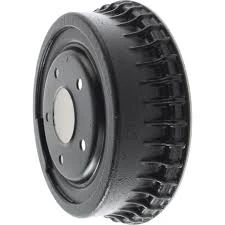
-
 Afrikaans
Afrikaans -
 Albanian
Albanian -
 Amharic
Amharic -
 Arabic
Arabic -
 Armenian
Armenian -
 Azerbaijani
Azerbaijani -
 Basque
Basque -
 Belarusian
Belarusian -
 Bengali
Bengali -
 Bosnian
Bosnian -
 Bulgarian
Bulgarian -
 Catalan
Catalan -
 Cebuano
Cebuano -
 Corsican
Corsican -
 Croatian
Croatian -
 Czech
Czech -
 Danish
Danish -
 Dutch
Dutch -
 English
English -
 Esperanto
Esperanto -
 Estonian
Estonian -
 Finnish
Finnish -
 French
French -
 Frisian
Frisian -
 Galician
Galician -
 Georgian
Georgian -
 German
German -
 Greek
Greek -
 Gujarati
Gujarati -
 Haitian Creole
Haitian Creole -
 hausa
hausa -
 hawaiian
hawaiian -
 Hebrew
Hebrew -
 Hindi
Hindi -
 Miao
Miao -
 Hungarian
Hungarian -
 Icelandic
Icelandic -
 igbo
igbo -
 Indonesian
Indonesian -
 irish
irish -
 Italian
Italian -
 Japanese
Japanese -
 Javanese
Javanese -
 Kannada
Kannada -
 kazakh
kazakh -
 Khmer
Khmer -
 Rwandese
Rwandese -
 Korean
Korean -
 Kurdish
Kurdish -
 Kyrgyz
Kyrgyz -
 Lao
Lao -
 Latin
Latin -
 Latvian
Latvian -
 Lithuanian
Lithuanian -
 Luxembourgish
Luxembourgish -
 Macedonian
Macedonian -
 Malgashi
Malgashi -
 Malay
Malay -
 Malayalam
Malayalam -
 Maltese
Maltese -
 Maori
Maori -
 Marathi
Marathi -
 Mongolian
Mongolian -
 Myanmar
Myanmar -
 Nepali
Nepali -
 Norwegian
Norwegian -
 Norwegian
Norwegian -
 Occitan
Occitan -
 Pashto
Pashto -
 Persian
Persian -
 Polish
Polish -
 Portuguese
Portuguese -
 Punjabi
Punjabi -
 Romanian
Romanian -
 Russian
Russian -
 Samoan
Samoan -
 Scottish Gaelic
Scottish Gaelic -
 Serbian
Serbian -
 Sesotho
Sesotho -
 Shona
Shona -
 Sindhi
Sindhi -
 Sinhala
Sinhala -
 Slovak
Slovak -
 Slovenian
Slovenian -
 Somali
Somali -
 Spanish
Spanish -
 Sundanese
Sundanese -
 Swahili
Swahili -
 Swedish
Swedish -
 Tagalog
Tagalog -
 Tajik
Tajik -
 Tamil
Tamil -
 Tatar
Tatar -
 Telugu
Telugu -
 Thai
Thai -
 Turkish
Turkish -
 Turkmen
Turkmen -
 Ukrainian
Ukrainian -
 Urdu
Urdu -
 Uighur
Uighur -
 Uzbek
Uzbek -
 Vietnamese
Vietnamese -
 Welsh
Welsh -
 Bantu
Bantu -
 Yiddish
Yiddish -
 Yoruba
Yoruba -
 Zulu
Zulu
Brake Drum Specification Guide - Comprehensive Brake Drum Information
Brake Drum Specification Guide
When it comes to the performance and safety of vehicles, the brake system plays a crucial role. One of the essential components of this system is the brake drum. Understanding brake drum specifications is vital for selecting the right parts for maintenance or replacement. This guide aims to provide an overview of critical elements to consider when it comes to brake drums.
Material Composition Brake drums are typically made from cast iron or aluminum. Cast iron is favored for its durability and heat dissipation properties, which are essential for effective braking. Aluminum drums, on the other hand, are lightweight and can improve fuel efficiency but may not provide the same thermal stability as cast iron. Understanding the material composition is vital for ensuring that the drum meets the specific performance requirements of your vehicle.
Diameter and Width The size of the brake drum—both its diameter and width—directly influences braking efficiency. The diameter affects how much leverage is applied to the brake shoes, while the width impacts the surface area available for friction. It is crucial to refer to the manufacturer's specifications for the exact dimensions to ensure a proper fit and optimal performance.
brake drum specification guide

Wall Thickness Wall thickness is an often-overlooked specification that plays a significant role in the structural integrity of the brake drum. Thicker walls generally offer better strength and heat resistance, which can prolong the life of the drum and enhance safety. Thin walls may save weight but can lead to premature failure under high-stress conditions.
Brake Shoe Compatibility Ensuring that the brake drum is compatible with the brake shoes is imperative. The design and dimensions of the brake shoes must match those of the drum to ensure effective braking. Mismatches can lead to uneven wear and diminished braking performance.
Heat Dissipation Effective heat dissipation is critical to preventing brake fade—a condition that can occur when the brakes overheat and fail to provide adequate stopping power. Look for brake drums designed with ventilation features or materials engineered to withstand high temperatures.
In conclusion, choosing the right brake drum involves careful consideration of various specifications, including material, size, wall thickness, and compatibility with brake shoes. By following these guidelines, vehicle owners can enhance their braking system's performance and safety, ensuring a smoother and more secure driving experience.
-
What Are Drum BrakesNewsJul.07,2025
-
Understanding Brake Drum MaterialNewsJul.07,2025
-
Semi-Trailer Brake Drum: A Key Component for Extreme Loads and Long-Distance TransportNewsJul.07,2025
-
Drum Brake Pads for SaleNewsJul.07,2025
-
Brake Drums for SaleNewsJul.07,2025
-
Brake Drum ManufacturerNewsJul.07,2025
-
Aluminum Brake Drums: The Future of High-Performance CarsNewsJul.07,2025
